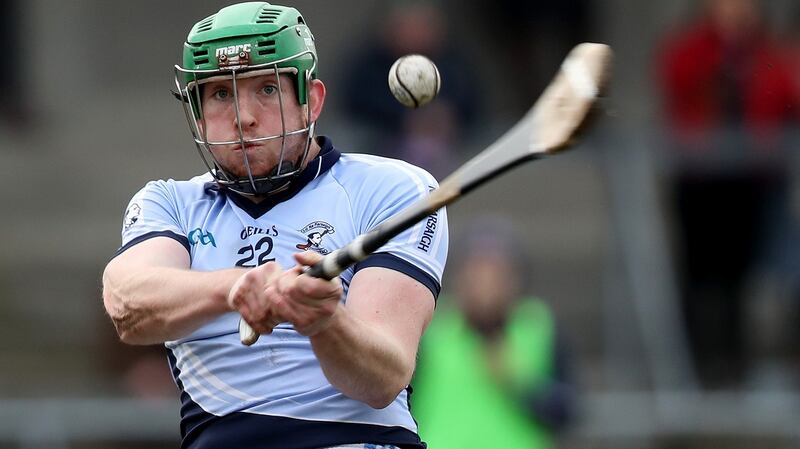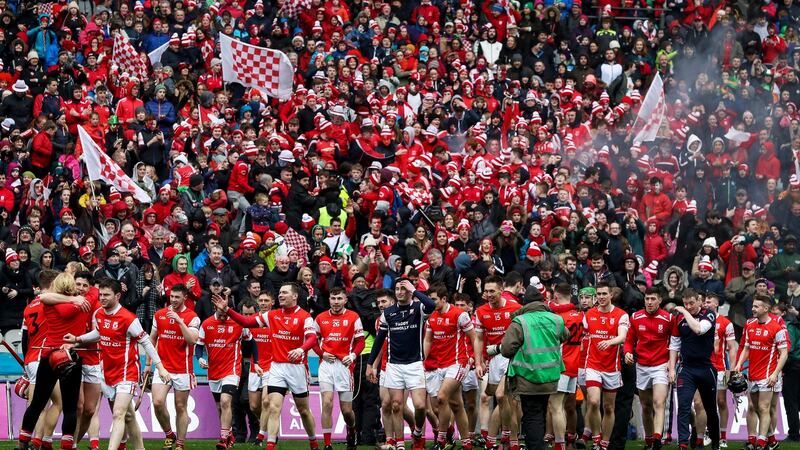It's unfortunate timing that Saturday's AIB All-Ireland club hurling final overlaps with Ireland's Grand Slam rugby encounter in Twickenham, as it's hard to think of two places with more obvious rugby catchments than Dalkey in south Co Dublin and Limerick city.
All the more frustrating when the hurling so clearly merits full attention, as, for the first time in the 47-year history of the championship, it brings together the clubs, Cuala and Na Piarsaigh, who have won the All-Ireland for the past two years.
Their reputations suggest – and have created fervent hopes – that an almost uninterrupted run of one-sided hurling finals since 2001 can be halted with a glorious contest.
"It's between the two best club sides of the past decade," according to Michael McShane who, as coach of Slaughtneil's hurlers, came across both of the finalists in the past 12 months at the semi-final stage.
Former Clare All-Ireland winner Ollie Baker, who coached the Kilmacud team that – both last season and, to date, this one – gave Cuala in the Dublin final their hardest match, echoes that view.
“Easily! It’s up there with the Portumna-Ballyhale rivalry.”
Both are suburban clubs, who have developed their talent base and pushed on to create seismic impacts by becoming the first from their respective counties to win the All-Ireland.
Cuala have reached a second successive final, hoping to become only the second non-Galway club (significant, as Connacht has never had a fully functioning provincial championship) to win back-to-back titles after Birr 15 years ago.
Remarkable record
Na Piarsaigh have the remarkable record of never having lost a provincial match: four Limerick titles have been followed by four Munsters and, two seasons ago, the All-Ireland.
A year ago Slaughtneil battled Cuala but trailed throughout, but last month in this year’s semi-final they led Na Piarsaigh at half-time only to lose the initiative in a turbulent second half that saw the Limerick club reduced to 13 almost immediately after half-time.

“They were very different semi-finals,” says McShane. “Our preparations for this year were a whole lot better and we had the experience of being there a year ago.
“We felt we were in with a great chance anyway and the first half vindicated that. Then, when the sendings-off happened so quickly, the big impact was that Shane O’Neill and the Na Piarsaigh management got themselves organised very quickly and withdrew their corner-forwards, leaving us with extra defenders, and it ended up not having as big a bearing on things as might have been expected.
It's brilliant that it's the second game – that it's getting top billing. Credit to the GAA for making that call
“Their defenders really rolled their sleeves up and as a team they showed a lot of character.
"Shane Dowling produced two pieces of magic – his goal was out of this world, but his pass for Kevin Downes's goal was also brilliant."
Baker shares McShane’s enthusiasm for the final.
“It’s brilliant that it’s the second game – that it’s getting top billing. Credit to the GAA for making that call. It’s an issue for the clubs as well. They know that a big game like this will decide how they’re rated and ranked for the future. We made two finals in a row and felt that we had left our footprint even though we didn’t win the second one.”
Scale of the challenge
That experience made him familiar with the demands of trying to retain a club All-Ireland when Doora Barefield reached the final in 2000, 12 months after winning the title, and he acknowledges the scale of the challenge.
“It was something I was thinking about before Cuala’s semi-final: would [Galway champions, Liam] Mellows’ freshness and the novelty of it all pose a problem? The difference nowadays is the improvement in sports science.
“Professionals design training loads. When we were playing the point was to peak for the games, which added up to four, five or six a year. Now you maintain levels of fitness and those levels are way ahead of inter-county back in the late 1990s and even into the 2000s.”

For McShane, there is one sliver of daylight that may separate the teams.
“There’s very little between them. Possibly – just possibly – Cuala are over-reliant on Con [O’Callaghan] while Na Piarsaigh have a better spread of scorers.”
Baker, while accepting that the most talked-about young player in the GAA has an important role, disagrees.
"I wouldn't think that's true. He does make their game plan tick and maybe that gives the impression of over-dependence, but they're an extremely good team even without Con O'Callaghan. They know how to counter-attack at pace and I like the way goals come from their middle third – Colm Cronin, Darragh O'Connell – when they turn over ball.
“I did think that Cuala wouldn’t be as tuned in this season after winning an All-Ireland, but my experience in Dublin was that they were actually more tuned in. It wasn’t a cockiness but a confidence that ‘we’re not finished yet; we can make another Paddy’s Day voyage’.
“Now, all clubs say that, but Cuala have actually done it.”















